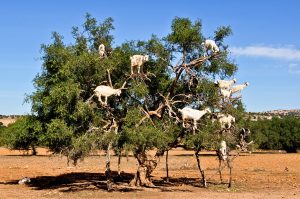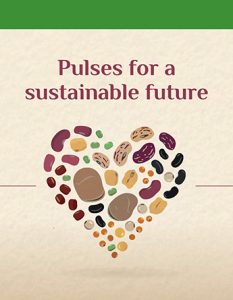 The argan tree as a fundamental pillar for sustainable development
The argan tree as a fundamental pillar for sustainable development
The argan tree is typically a multipurpose tree that supports income generation, increases resilience and improves climate adaptation, playing a very important role in achieving the three dimensions of sustainable development – economic, social and environmental – at the local level.
The sustainable argan production sector contributes to the economic empowerment and financial inclusion of local communities, especially women living in rural areas. Cooperatives are instrumental in promoting local job opportunities and can play an important role in contributing to food security and in eradicating poverty.
For centuries, the argan tree has been a mainstay of the Berber and Arab-origin indigenous rural communities, which developed a specific culture and identity, sharing their traditional knowledge and skills through non-formal education, particularly the unique knowledge associated with the traditional production of argan oil by women.
The unique argan-based agro-forestry-pastoral system uses only locally adapted species and pastoralism activities and relies on traditional water management provided by the Matifiya – a rain water reservoir carved into rock, hence contributing to climate change mitigation and adaptation, and to the conservation of biodiversity.
Did you know?
- The argan tree withstands temperatures of up to 50° Celsius.
- The argan trees are a true bastion against desertification, which can reach 10 meters in height and can live for 200 years.
- A symbol of eternity and resistance, the argan tree has a strong symbolic and emotional value for local communities.
- Argan oil is given as a wedding gift and is used extensively in the preparation of festive dishes.
- It takes about 150 kg of fruit to produce 3 litres of argan oil.
 Pulses are the edible seeds of leguminous plants cultivated for both food and feed.
Pulses are the edible seeds of leguminous plants cultivated for both food and feed. The United Nations’ (UN) World Meteorological Day is annually held on or around March 23 to remember the World xMeteorological Organization’s establishment on that date in 1950. Many different activities and events are organized for this occasion.
The United Nations’ (UN) World Meteorological Day is annually held on or around March 23 to remember the World xMeteorological Organization’s establishment on that date in 1950. Many different activities and events are organized for this occasion.
 Mangroves are rare, spectacular and prolific ecosystems on the boundary between land and sea. They ensure food security for local communities. They provide biomass, forest products and sustain fisheries. They contribute to the protection of coastlines. They help mitigate the effects of climate change and extreme weather events.
Mangroves are rare, spectacular and prolific ecosystems on the boundary between land and sea. They ensure food security for local communities. They provide biomass, forest products and sustain fisheries. They contribute to the protection of coastlines. They help mitigate the effects of climate change and extreme weather events.